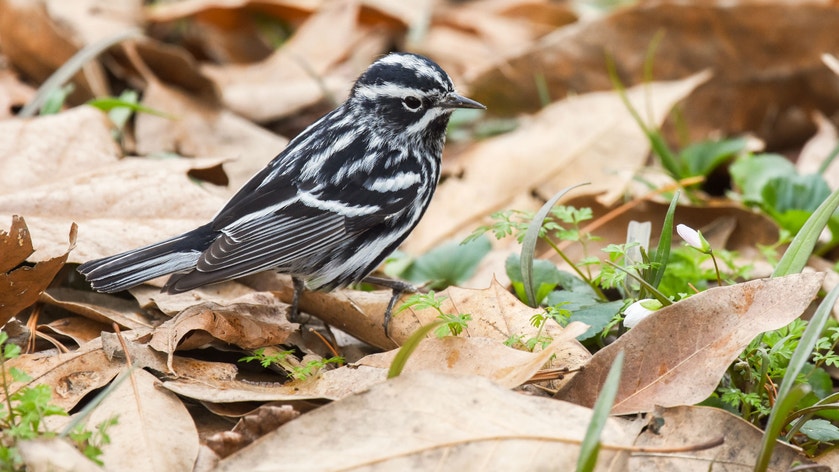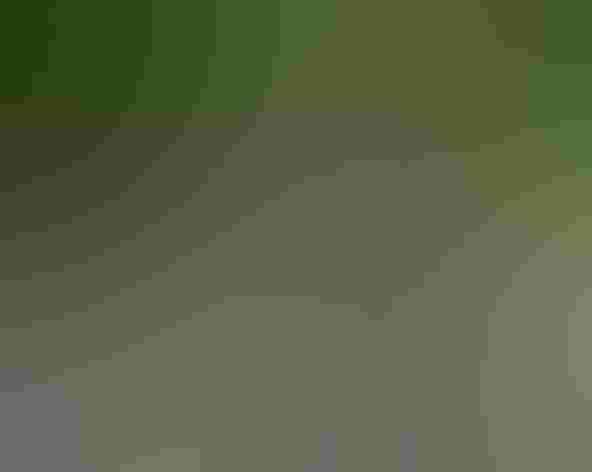Black-and-white Warbler
At a Glance
This bird is often a favorite warbler for beginning birders, because it is easy to see and easy to recognize. It was once known as the 'Black-and-white Creeper,' a name that describes its behavior quite well. Like a nuthatch or creeper (and unlike other warblers), it climbs about on the trunks and major limbs of trees, seeking insects in the bark crevices. It often feeds low, and nests even lower, usually on the ground.
All bird guide text and rangemaps adapted from Lives of North American Birds by Kenn Kaufman© 1996, used by permission of Houghton Mifflin Harcourt Publishing Company. All rights reserved.
Category
Perching Birds, Wood Warblers
IUCN Status
Least Concern
Habitat
Forests and Woodlands, Shrublands, Savannas, and Thickets
Region
Alaska and The North, California, Eastern Canada, Florida, Great Lakes, Mid Atlantic, New England, Northwest, Plains, Rocky Mountains, Southeast, Southwest, Texas, Western Canada
Behavior
Direct Flight, Flitter
Population
18.000.000
Range & Identification
Migration & Range Maps
Spring migration begins rather early; migration is spread over a lengthy period in both spring and fall. Strays may appear in the west at any season. Migrates mostly at night.
Description
5" (13 cm). Bold stripes, including white central crown stripe, black streaks on back and sides. Adult male has black throat and cheeks; female and young paler or whitish there. Compare to Black-throated Gray and Blackpoll Warblers. Tree-creeping behavior is best mark.
Size
About the size of a Sparrow
Color
Black, White
Wing Shape
Rounded
Tail Shape
Notched, Rounded, Square-tipped
Songs and Calls
A thin, high-pitched, monotonous weesy-weesy-weesy-weesy, like a squeaky wheelbarrow.
Call Pattern
Flat, Undulating
Call Type
Chirp/Chip, Hi, Whistle
Habitat
Woods; trunks, limbs of trees. Breeds in mature or second-growth forests, deciduous and mixed. Often in woods on dry, rocky hillsides and ravines. Also nests in dry portions of wooded swamps. In migration, seen most often on trunks and low branches of trees within woodlands and thickets. In winter in the tropics, found in trees from sea level to high in the mountains.
Sign up for Audubon's newsletter to learn more about birds like the Black-and-white Warbler
Behavior
Eggs
5, sometimes 4, rarely 6. Creamy white, flecked with brown at large end. Incubated by female only, 10-12 days. Commonly parasitized by cowbirds.
Young
Fed by both parents. Leave the nest 8-12 days after hatching, before they are able to fly well.
Feeding Behavior
Adapted to creeping along limbs and on tree trunks to feed. Switches body from side to side at each hop while foraging. In early spring, takes dormant insects from tree trunks and branches. Sometimes flies out after flying insects.
Diet
Insects. Feeds on a wide variety of caterpillars (including those of gypsy moths), beetles (including bark beetles, click beetles, and wood borers), ants, flies, bugs, leafhoppers, aphids, and other insects; also spiders and daddy longlegs.
Nesting
Males arrive on breeding grounds in late April, before the females. During courtship, male chases female, with much singing and fluttering. Nest: Placed on ground (or less than 2' up), under dead leaves or limbs, against a shrub, rock, log, or tree. Usually constructed in cavity at top of stump or in a depression in the ground. Open cup (built by female) made of leaves, coarse grass stems, bark strips, pine needles, rootlets; lined with fine grass or hair.
Conservation
Conservation Status
Has disappeared from some former nesting areas, especially in South and Midwest. Still widespread and common.
Climate Threats Facing the Black-and-white Warbler
Choose a temperature scenario below to see which threats will affect this species as warming increases. The same climate change-driven threats that put birds at risk will affect other wildlife and people, too.





